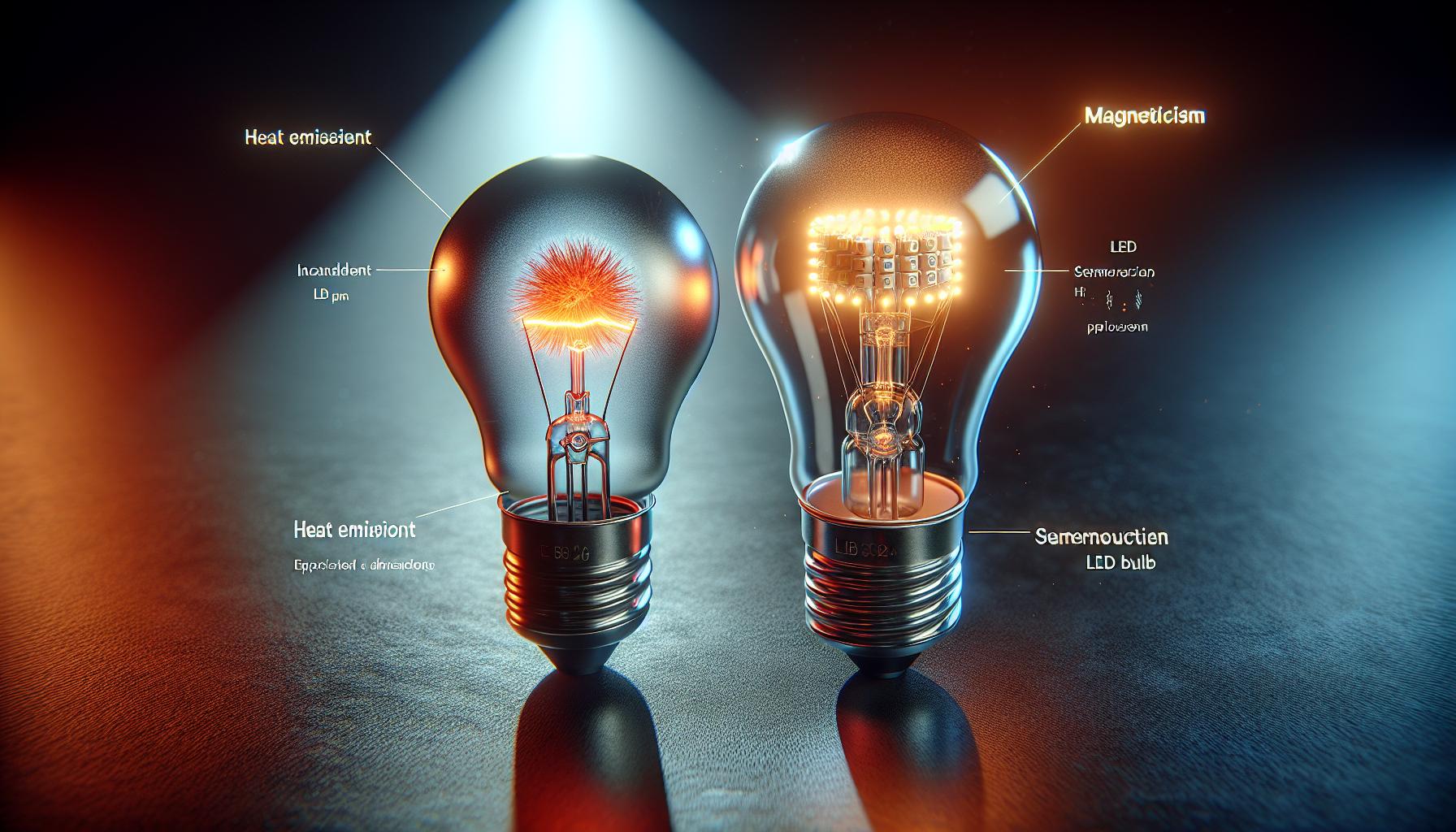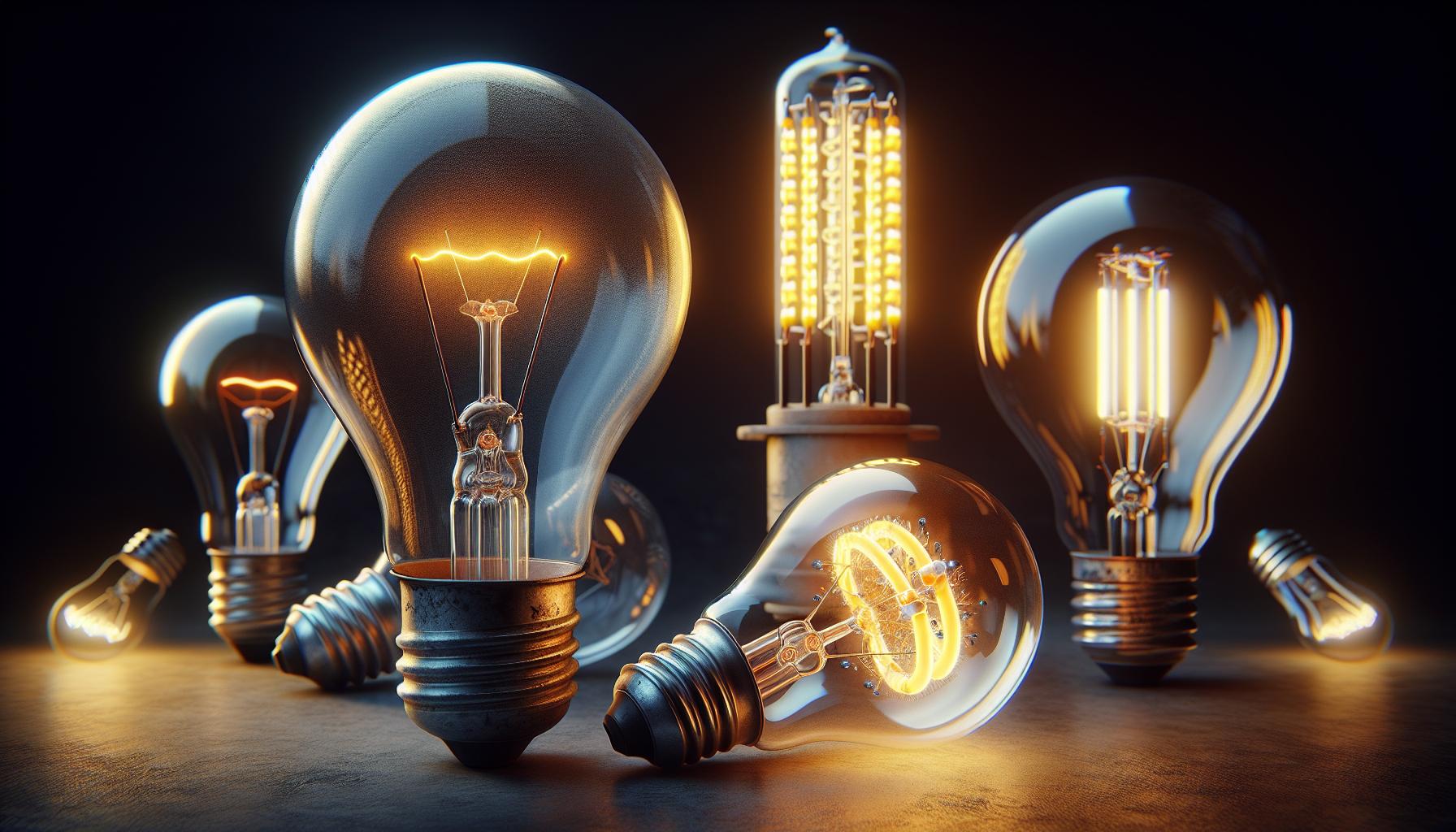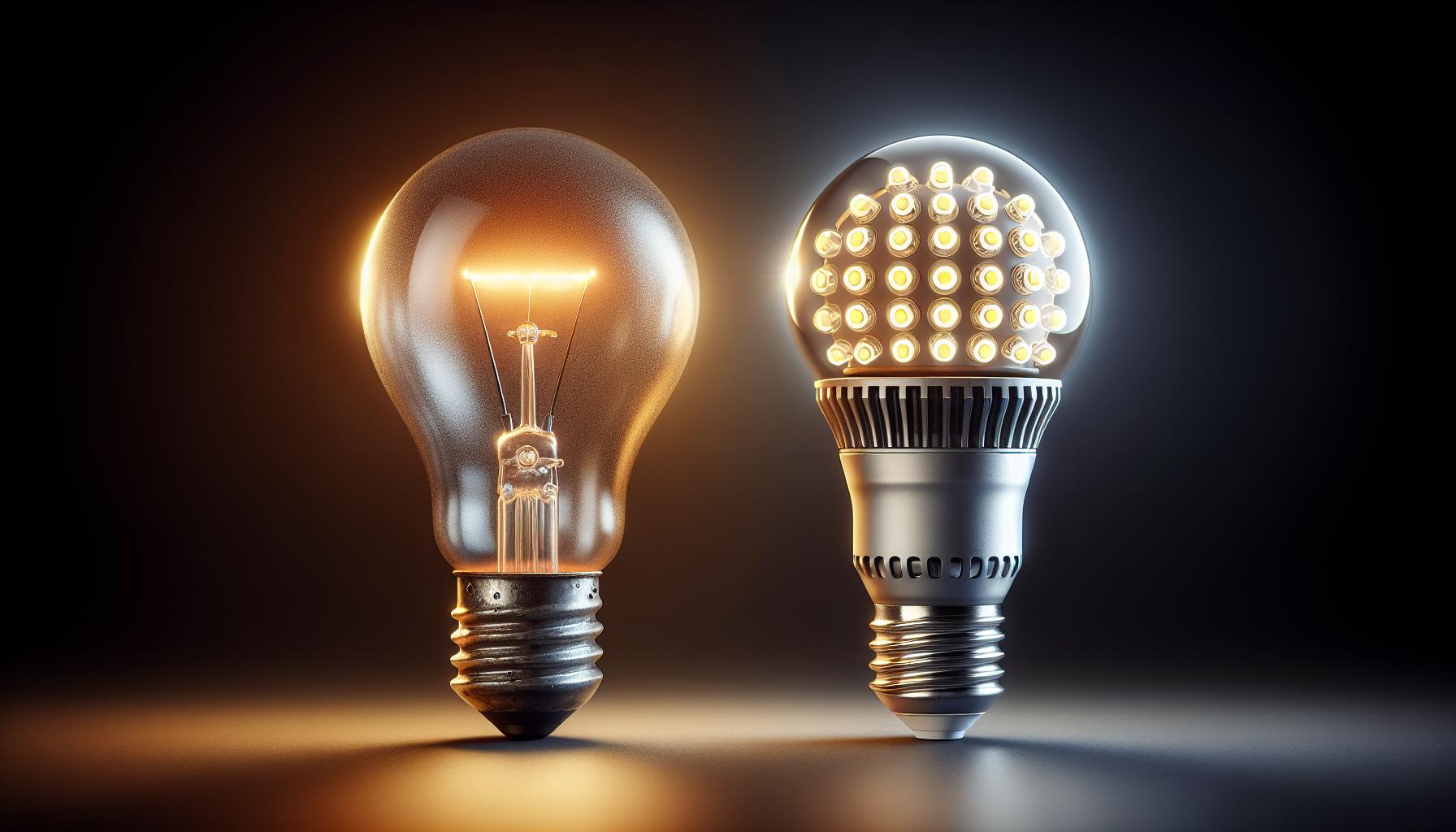Ever wondered what goes on behind the scenes when you flip the switch and your room lights up? You might think it’s all about electricity, but have you ever considered the role of magnetism in lighting up your world? It’s a question that doesn’t often come to mind, but it’s definitely intriguing.
You’re not alone if you’ve never linked light bulbs with magnets. After all, they’re not sticking to your fridge, right? But the science of how light bulbs work might just surprise you. Let’s shed some light on the magnetic mystery within the humble bulb lighting up your space.
The Role of Magnetism in Light Bulbs
Picture this: electrons swirling around, a magnetic field dictating their path. That’s what’s happening inside a light bulb. You might think of screwing in a bulb and flipping a switch without considering the intricate dance of physics that brings light to your room.
First off, understand that it’s all about the flow of electricity. In traditional incandescent bulbs, when electricity runs through the tungsten filament, it heats up to a point where it glows, producing light. However, where does magnetism come into play? It’s hidden in the flow of electrons.
Electrons move due to the electric field but remember your science classes where they talked about how moving charges create a magnetic field? That’s right; as electrons move, they generate a magnetic field due to Lorentz forces which are fundamental to how electric motors work – and that includes those tiny dynamos that happen to light up our homes.
LED lights, the favored child of energy efficiency, operate differently. They use semiconductors and rely on electroluminescence; a process where electrons and holes within the semiconductor material recombine, releasing energy in the form of photons – light, to us laypeople. But if you probe deeper, magnetic fields are still part of this quantum-level party. The introduction of rare earth magnets in the manufacturing of LEDs has made the technology more robust and efficient.
Your enthusiasm for DIY projects and lighting solutions isn’t just about creating a cozy ambiance or illuminating a workspace. It’s a hands-on exploration of the magic of magnetism in everyday life. So next time you’re installing a light fixture or choosing a bulb, think about the invisible forces at play. It’s not just about watts or lumens; it’s the silent symphony of magnetism that brightens up the dark, one flip of the switch at a time.
Understanding the Science Behind Light Bulbs
Diving a bit deeper into the heart of a light bulb, you’re dealing with two primary components: the filament and the gas within the bulb. In an incandescent bulb, the classic filament is made from tungsten. When electricity is introduced, it flows through the tungsten, causing it to heat to around 2,500 degrees Celsius. This intense heat makes the filament glow fiercely, emitting the light that you see.
What’s less visible is how magnetism plays its part. The flow of electricity is essentially a flow of electrons, negatively charged particles that are fundamentally magnetic. Their movement generates a magnetic field, yet it’s so minute that it doesn’t interfere with the light emitted.
In contrast, LED bulbs work on a more complex principle called electroluminescence. Semiconductors within the LED control the flow of electricity and light is emitted when electrons pass through. Although LEDs don’t have a traditional filament, they do create tiny magnetic fields as the electrons move.
Here’s a quick breakdown of what happens inside both bulb types:
| Feature | Incandescent Bulb | LED Bulb |
|---|---|---|
| Filament Material | Tungsten, which glows hot when heated | None, uses semiconductors |
| Heat Emitted | Can reach 2,500°C | Much less, more energy-efficient |
| Principal | Simple resistance-based mechanism | Electroluminescence |
| Magnetism | Mild magnetic field due to electron flow | Weak magnetic fields from the semiconductor |
Whether you’re screwing in a light bulb at home or setting up a sophisticated lighting system, the science behind it is rooted in both electrical and magnetic principles. Next time you flick on a switch, remember there’s more than meets the eye happening behind that warm, welcoming glow.
For your DIY projects, acknowledging the electrical and magnetic interactions can give you a better idea of the type of bulbs to invest in, especially when aiming for energy efficiency or a particular ambiance. LEDs might be your go-to for a cooler temperature light and lower energy bills, while incandescents could offer that nostalgic warmth that’s hard to replicate.
How Light Bulbs Work
« Do Light Bulbs Get Old? How to Maximize Bulb Life & Spot Aging Signs
How to Prevent Light Bulbs from Sticking in Socket: Easy Maintenance Tips »
Stepping into the fascinating world of light bulbs, you’ll discover how they are more than just simple household items. They embody a science that’s both complex and riveting, one you might appreciate given your knack for DIY projects and a love for lighting up spaces creatively.
Incandescent bulbs, the ones traditionally used for years, work by passing an electrical current through a filament, usually made of tungsten. The filament then heats up to a temperature that produces light, a process known as incandescence. Despite their simplicity, they’re not very energy-efficient, mainly due to the heat they emit – most of their energy is converted to heat rather than light.
You’ve likely heard the buzz about LED bulbs, which stand for Light Emitting Diodes. LEDs work on a principle called electroluminescence, where light is produced as a result of the movement of electrons through a semiconductor material. This process creates tiny magnetic fields, incidental but intrinsic to the function of the bulb.
| Bulb Type | Material | Light Production | Magnetism |
|---|---|---|---|
| Incandescent | Tungsten Filament | Incandescence (Heat) | Electrons Flow |
| LED | Semiconductor | Electroluminescence | Electrons Movement |
With the emphasis on energy efficiency, LEDs are a staple for your home projects. They offer longevity and consume far less power, which is paramount if you’re aiming to craft a well-lit, energy-smart home.
When you’re choosing the right bulb for a project, consider not just the brightness and color temperature, but also their operational principle. Different bulbs have varying effects on room ambiance and energy consumption, which are key to the perfect lighting scheme. Experimenting with different types of bulbs can be a practical and illuminating experience, especially when you’re looking to strike that delicate balance between aesthetics and functionality.
The Connection Between Magnetism and Light Bulbs
When you’re knee-deep in a home DIY project, choosing the right lighting can seriously affect both the functionality and mood of your space. As a fervent DIYer and lighting enthusiast, gaining a deeper understanding of how your light bulbs work is crucial. Magnetism plays a sly role here, and it’s fascinating how it’s intertwined with the luminance you rely on.
First up, consider the classic incandescent bulb. It’s been brightening homes for over a century, and its filament, usually made of tungsten, is a playground for both electrical and magnetic phenomena. When electricity surges through, it doesn’t just heat the filament and emit light—it also creates a subtle magnetic field due to the motion of electrons. This isn’t usually a factor in your lighting choice, but it’s part of the intricate dance of physics that lights up your world.
Transitioning to LEDs, the scene changes a bit. They don’t have filaments but use semiconductors to achieve their glow—a process called electroluminescence. It sounds complex, and it is, but at its core, it still boils down to electrons moving and grooving in a material. This motion, albeit different from the heating of a filament, still generates minuscule magnetic fields. It’s these fields, invisible and often ignored, that accompany the brightness of your room.
In your quest for the perfect bulb, remember that:
- Incandescent bulbs emit more heat along with their cozy light, often making them less energy-efficient.
- LEDs are the cooler sibling, thanks to their lower heat emission and high energy efficiency.
- Despite different mechanisms, both types of bulbs involve electrical and magnetic interactions.
So next time you’re swapping out a bulb or pondering the best fixture for that reading nook you’re jazzing up, think about the secret magnetic concert that’s playing out. It’s not just about lumens and wattage—your bulb’s performance is a testament to the entwined relationship between electricity and magnetism.
Exploring the Magnetic Mystery within Light Bulbs
You’ve been illuminating spaces with light bulbs for years, but have you ever paused to consider the magnetic mystery that lies within each bulb? Despite the leap from incandescent bulbs to LEDs, magnetism has an omnipresent but unseen role in your everyday lighting.
Incandescent bulbs, the type you might associate with Thomas Edison, operate on a seemingly simple principle. When you flick that switch, electricity streams through the tungsten filament, creating a warm, inviting glow. But the reality is that this stream of electrons, indispensable for illumination, is guided by magnetic fields. The electrons, while invisible to the naked eye, dance within these fields, producing the light that has brightened homes for over a century.
Transition to LED technology, which you might favor for their energy efficiency and longevity. LEDs rely on electroluminescence—a process where light is emitted in response to an electric current passed through a semiconductor. Even here, magnetism plays a subtle but fundamental role. The movement of electrons through semiconductors in LED bulbs generates small magnetic fields. These fields are intrinsic to the operation of the LEDs, though on a much smaller scale than with traditional incandescent bulbs.
Consider the implications of magnetism in your next home DIY project or lighting setup. The allure of the perfect ambiance could well be influenced by these subtle magnetic interactions. Overlooked by many, savvy enthusiasts like you can appreciate the nuance that magnetism brings to lighting.
So as you select bulbs for your project, remember to think about not just the light they emit or the energy they conserve. Remember to consider the hidden magnetic elements at play. Knowing the full story behind your light bulbs can empower you to make informed decisions that enhance the quality and efficiency of your lighting designs.
Conclusion
So you’ve seen how magnetism, though not the star of the show, plays a crucial role in lighting up your space. Whether it’s the warm glow of an incandescent bulb or the efficient brilliance of an LED, magnetic fields are at work behind the scenes. Remember, when you’re picking out bulbs, you’re not just choosing between different types of light; you’re also selecting the kind of electrical and magnetic interplay that suits your needs. Appreciate the subtle yet significant presence of magnetism next time you flip the switch—it’s part of what illuminates your world.
Frequently Asked Questions
Does magnetism play a role in lighting up a room with bulbs?
Yes, magnetism is involved in the functioning of both incandescent and LED bulbs due to the flow of electrons which creates tiny magnetic fields.
How do incandescent bulbs produce light?
Incandescent bulbs produce light by heating a tungsten filament with an electric current until it glows.
What principle do LED bulbs work on?
LED bulbs operate on a principle called electroluminescence, where they emit light as electrons move through a semiconductor material.
What are the key differences between incandescent and LED bulbs?
The key differences include filament material (tungsten in incandescent, semiconductor in LED), heat emitted (more in incandescent), the principle of operation (heating vs. electroluminescence), and the way magnetism is involved.
Why is it important to understand electrical and magnetic interactions in light bulbs?
Understanding these interactions is crucial for selecting the most energy-efficient and suitable bulbs for specific lighting needs and ambiance.
What are the benefits of LED bulbs over incandescent bulbs?
LED bulbs offer benefits such as a longer lifespan, greater energy efficiency, and reduced heat emission compared to incandescent bulbs.
How does the principle of operation affect the choice of light bulbs?
The principle of operation affects the bulb’s performance, energy consumption, and overall effectiveness for a project, guiding the choice of bulbs for different applications.





